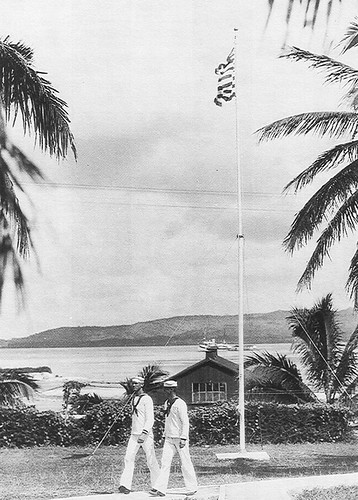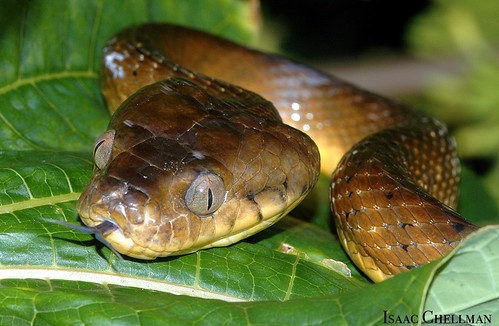Kulepbla: Snake
The snake in paradise
The snake first entered Guam, the CHamoru language and CHamoru consciousness hundreds of years before it physically arrived.
The symbol of the snake (kulepbla) first appeared in religious texts of the Catholic Church, as a symbol of wickedness, evil and deceit. Although the snake appears regularly throughout the Bible, it is most prominently associated with the form the devil takes when he tricks Adam and Eve into sinning in the Garden of Eden.
Brown treesnake
The brown treesnake was brought to Guam accidentially via the US military, most likely in the late 1940’s or the 1950’s from the Solomon Islands aboard a ship. By the start of the 21st century, some estimates placed the number of snakes on Guam at one million, which is seven times more than the human population of Guam.
The list of negative impacts from this invasive species on the island are numerous, but can generally be divided into two types, economic and environmental. The brown treesnake has historically been blamed for causing power outages and other damage to Guam’s infrastructure, resulting in lost revenue for local businesses and also expenditures by Government of Guam to fix the damage. It is also possible that the notoriety that Guam has been saddled with because of this snake problem has in some way damaged its reputation as a desirable tourist destination.
As for environmental damage, the brown treesnake is now infamous for wrecking havoc on Guam’s native bird and lizard population, resulting in the extinction of some species and the near extinction of other species on island. But the snake’s potential negative impacts on Guam’s ecosystem could be much more extensive. As birds play a significant role in tree pollination, through the distribution of tree seeds, as well as the eating and controlling of insects, the brown treesnake has also damaged the size and strength of Guam’s native tree population.
A symbol of American ignorance
Several high profile American news stories on Guam and its “snake problem” have helped cement in the minds of many Americans, a ridiculous image of Guam as an island which is overrun by brown treesnakes, where the people are literally suffocating beneath their slithering bodies.
The snake joins several other powerful images that frustrate CHamorus and others from Guam and that narrowly or oppressively define their island to outsiders, preventing Guam from being recognized in a realistic and respectful manner.
Despite being a colony of the United States for more than 120 years, the majority of Americans still know little or nothing about the island, and thus images of Guam as a military base only, or as an island infected with weird tropical diseases or being overrun with snakes, all come to dominate American ideas about Guam. The snake in Guam has thus come to also symbolize American ignorance about Guam.
Consequences of militarization
The snake’s presence is a consequence of the militarization of Guam, an accidental consequence, but still one which has negatively damaged the island. In the minds of those critical of historical or contemporary American military policy in Guam, the snake represents another negative consequence that Guam is forced to shoulder because of its status as the “tip of America’s spear” in the Pacific.
The snake thus can be invoked as a warning of future impacts. Since 2005, when the first announcements were made that by 2014, 8,000 US Marines from Okinawa and their dependents would be transferred to Guam, the brown treesnake has constantly loomed over local deliberations and questioning of the move. In these discussions, the snake is grim reminder of what damage has been done and what could be done by careless military in the future.
By Michael Lujan Bevacqua, PhD
For further reading
Jaffe, Mark. And No Birds Sing. Fort Lee: Barricade Books, 1997.
The Contamination of the Pacific, Day 2, Before the Fourth Committee on Special Political and Decolonization, 63rd General Assembly (2008) (statement of Craig Santos Perez, Guahan Indigenous Collective).
University of Washington. “Brown Tree Snake Could Mean Guam Will Lose More Than Its Birds.” Science Daily, 10 August 2008.
US Department of Agriculture’s Animal and Plant Health Inspection Service Guam Wildlife Services Office. “Brown Treesnake.” In Guampedia, last modified 14 July 2021.



